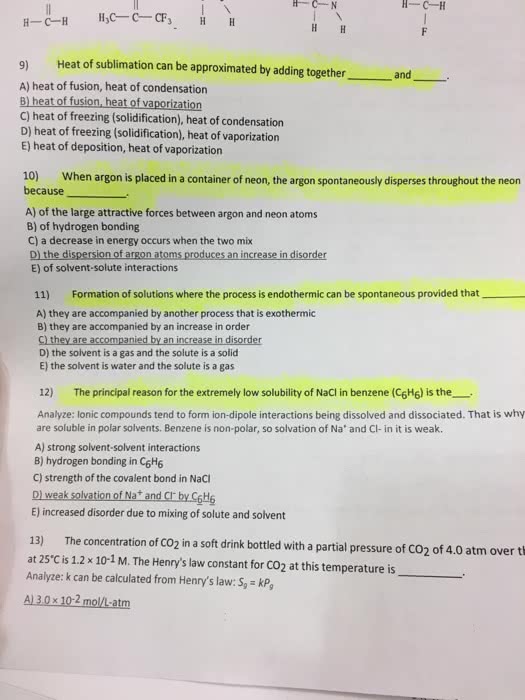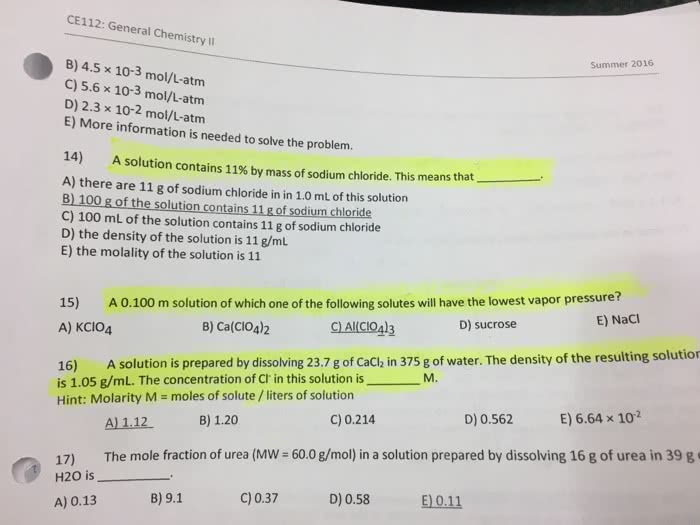CM-UY 1004 Lecture Notes - Lecture 7: Intermolecular Force, Molecular Mass, Solution Process
Document Summary
Chapter thirteen: properties of solutions: ability of substances to form solutions depends on two factors, natural tendency of substances to mix and spread into larger volumes when not restraining in some ways a. i. Mixing of gases is a spontaneous process, occurs without input of energy outside the system a. ii. Mixing occurs unless the molecules are restrained by strong intermolecular forces or by physical barriers: the types of intermolecular interactions involved in the solution process b. i. Solute-solute interactions between solute particles must be overcome in order to disperse the solute particles through the solvent b. ii. Solvent-solvent interactions between solvent particles must be overcome to make room for the solute particles in the solvent b. iii. Solvent-solute interactions between solvent and solute particles occur as the particles occur b. iv. Solutions form when the magnitudes of the solvent-solute interactions are either comparable to or greater than the solute- solute and solvent-solvent interactions.



